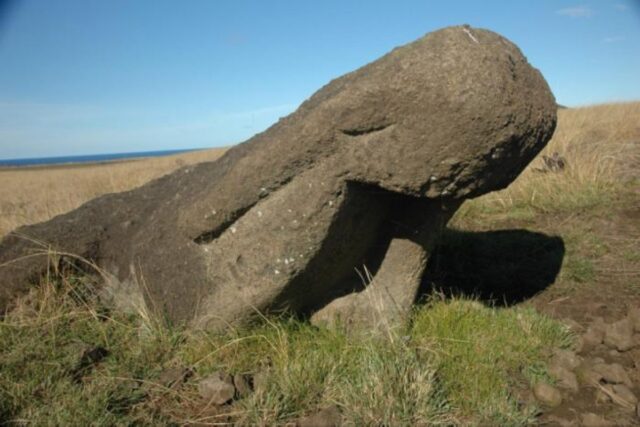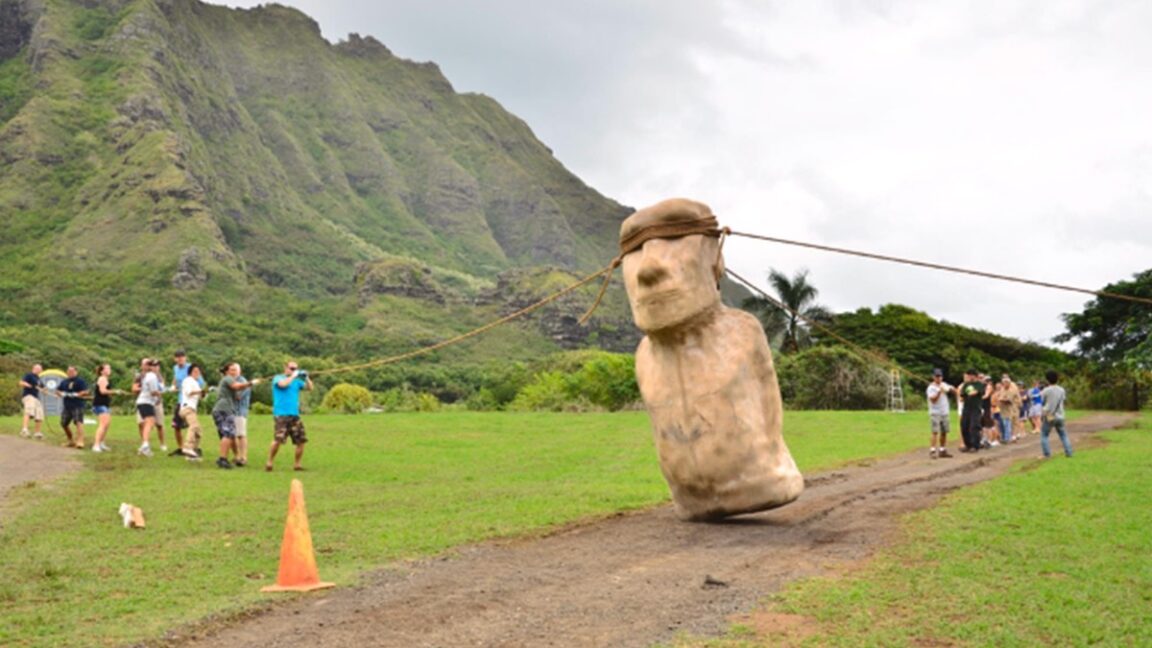The 2012 experiment demonstrated proof of principle, so why is Lipo revisiting it now? “I always felt that the [original] experiment was disconnected to some degree of theory—that we didn’t have particular expectations about numbers of people, rate of transport, road slope that could be walked, and so on,” Lipo told Ars. There were also time constraints because the attempt was being filmed for a NOVA documentary.
“That experiment was basically a test to see if we could make it happen or not,” he explained. “Fortunately, we did, and our joy in doing so is pretty well represented by our hoots and hollers when it started to walk with such limited efforts. Some of the limitation of the work was driven by the nature of TV. [The film crew] just wanted us—in just a day and half—to give it a shot. It was 4:30 on the last day when it finally worked so we really didn’t get a lot of time to explore variability. We also didn’t have any particular predictions to test.”

Example of a road moai that fell and was abandoned after an attempt to re-erect it by excavating under its base, leaving it partially buried at an angle.
Credit:
Carl Lipo
This time around, “We wanted to explore a bit of the physics: to show that what we did was pretty easily predicted by the physical properties of the moai—its shape, size, height, number of people on ropes, etc.—and that our success in terms of team size and rate of walking was consistent with predictions,” said Lipo. “This enables us to address one of the central critiques that always comes up: ‘Well, you did this with a 5-ton version that was 10 feet tall, but it would never work with a 30-ft-tall version that weighs 30 tons or more.'”
All about that base
You can have ahu (platforms) without moai (statues) and moai without ahu, usually along the roads leading to ahu; they were likely being transported and never got to their destination. Lipo and Hunt have amassed a database of 962 moai across the island, compiled through field surveys and photogrammetric documentation. They were particularly interested in 62 statues located along ancient transport roads that seemed to have been abandoned where they fell.

